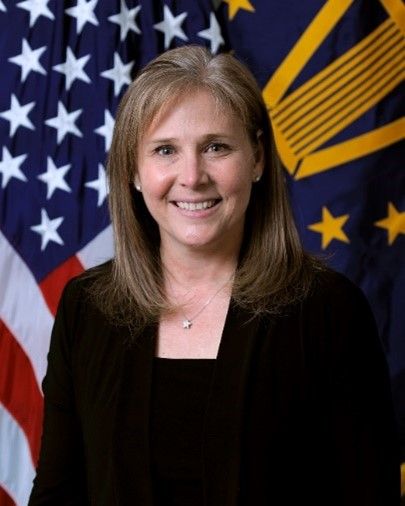DoD’s approach to fix its computers is function over form
Leslie Beavers, the principal deputy CIO for DoD, said a key focus for the near future is to improve the warfighter’s experience in using IT.
A year after a scathing report from the Defense Business Board found general unhappiness with the user experience with technology across the Defense Department, the chief information officer’s office is taking a simple approach to fix the computers.
A big part of this effort came earlier this year when DoD’s CIO created a customer experience office, led by Savanrith Kong, who now serves as the senior advisor for the user experience (UX) portfolio management office (PfMO).
Leslie Beavers, the principal deputy CIO for DoD, said the overarching philosophy behind this improved CX approach is putting the user and their mission first.

“I always lead off with, it’s got to be functional first. If it’s so secure that we can’t connect, we’re going to go around it and that’s not good,” Beavers said on Ask the CIO. “We have to be able to scale it. That’s the other big challenge that we have in the department. Not just internally, but we have to be able to scale to international allies and partners into the commercial world. Then the third piece is we have to be secure, and in this case, it’s with the zero trust. It’s tagging the people, tagging the data and doing the audit so that we know what’s happening and we can identify intrusions.”
The DoD CIO’s office got the message multiple times about function over form when it comes to why the user’s experience is so important.
The first time happened in the “fix my computer” post by Michael Kanaan, the director of operations for the Air Force – MIT Artificial Intelligence Accelerator in June 2022 that went viral.
The second moment of truth came from the Defense Business Board in February 2023. The DBB released survey results showing 80% of survey respondents rating their user experience as average or below average. Out of about 20,000 respondents, 48% rated their experience as “worst,” and 32% fell into the category of average.
Over the last year, the DoD CIO’s office has been addressing both process and technology.
DoD’s holistic perspective
DoD CIO John Sherman said last summer that the idea is to bring some standardization to the refresh cycle across all of the military and ensure user experience is a part of every technology initiative.
Beavers said now that Kang is on board, he is shaping DoD’s user experience effort.
“We’re looking at it from a holistic perspective because user experience is more than just having the latest equipment. It is all around the functionality and in the department, it’s different than in the commercial world,” she said. “If you think about an F-35, it’s a flying interoperable networked computer with the pilot. So the user experience is from the warfighters’ perspective. But whether you’re sitting in an operations room or behind a desk or out in a plane or on a ship, does your IT and your communications equipment work together and can you stay secure? The department is also standing up a big effort to get after the IT for the warfighter.”
Through this initiative, Beavers said the challenges are much different, ranging from a huge install base to legacy technology not designed to be interoperable and a limited budget.
At same time, Beavers said there’s a lot of opportunity to make some improvements to the user experience.
“We should make a concerted effort to look at where our policies are standing in the way of the interoperability. Where do we need an engineering solution? And where do we need just a process change?” she said. “The department is really pretty good at buying big things over long periods of time and buying quick things and bringing them when there’s an imperative like a war. But it’s not ingrained as part of the standard operating procedure in the department as much as we would like so we’re working on building that piece out, to help bring in the new technology and also to improve the customer experience.”
DoD, VA collaboration
Beavers added DoD is using the Lean Six Sigma business process improvement approach to help sort through the potential changes and to better understand the broader impacts of process and policy revisions.
Some recent work with the Veterans Affairs Department is a customer experience win, Beavers said.
At the North Chicago Veterans Medical Center, VA and DoD staff have worked closely together for the past decade or more. But their systems and networks were separate and data sharing was basically non-existent.
She said in some cases, it would take around 36 mouse clicks to send an email between the DOD and the VA.
“We spent the last six months pivoting to Office 365 in the cloud and turning on some business functionality,” Beavers said. “This really was a cooperation problem where the security folks on both sides had to decide to configure the clouds the same way to enable that interoperability. We are rolling that out now to the people working in less than six months.”
Copyright © 2025 Federal News Network. All rights reserved. This website is not intended for users located within the European Economic Area.
Jason Miller is executive editor of Federal News Network and directs news coverage on the people, policy and programs of the federal government.
Follow @jmillerWFED







